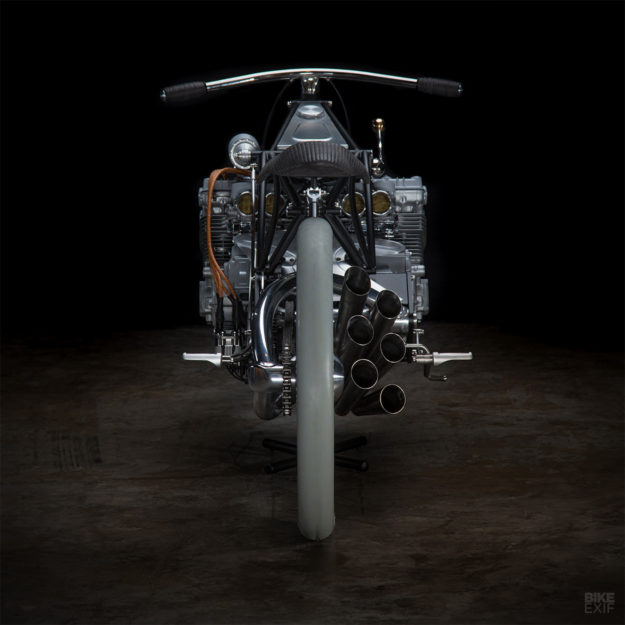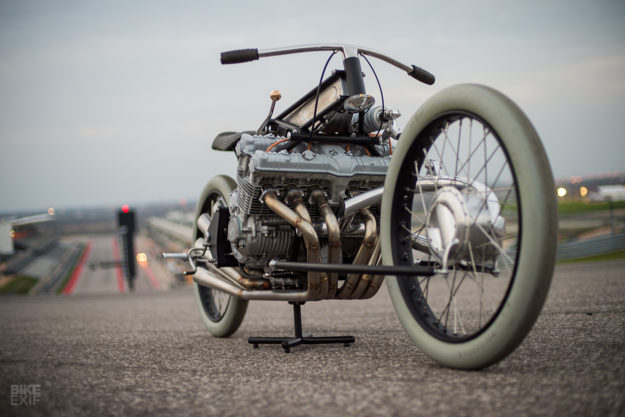
The Handbuilt Show is happening this coming weekend in Austin, Texas. One of the USA’s premium custom bike events, it’s packed each year with lustworthy handcrafted machines, curated by hosts Revival Cycles.
But even though this six-cylinder, hub-steered oddity is Revival’s handiwork—and will fit right in—it won’t be at the show this year. That’s because it’s just kicked off a one-year residency at the newly opened Haas Moto Museum at Dallas.
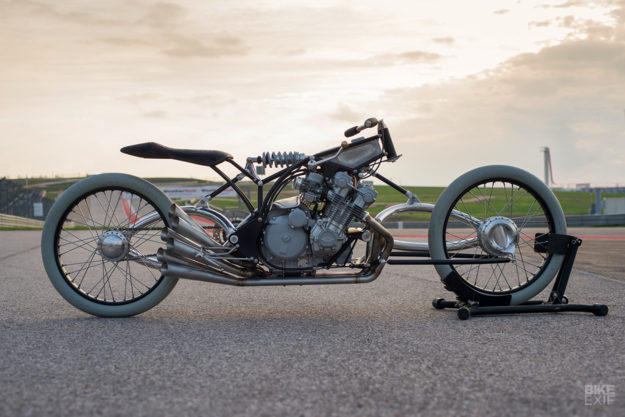
Museum owner and collector Bobby Haas has been on a mission lately. The museum is home to almost 110 vintage and custom motorcycles—some of them commissioned specifically for the collection. Rodsmith’s BSA Bantam was one such bike; this masterpiece is another.
It’s also the second Revival bike Mr Haas has commissioned. The first was the groundbreaking BMW Landspeeder, an homage to the famous Henne BMW racer of the 1920s. The moment they delivered the Landspeeder, Mr Haas had a fresh idea to pitch to Alan Stulberg and crew.
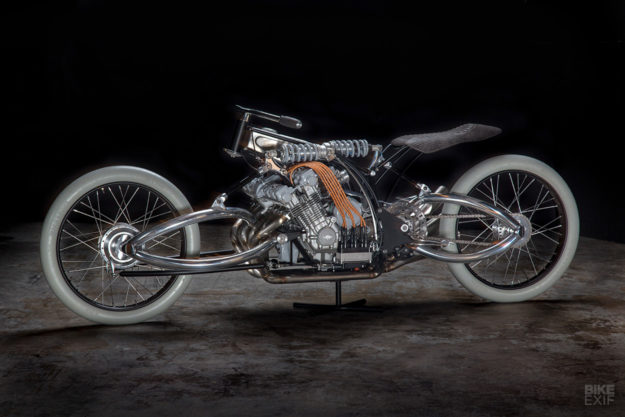
“He wanted us to consider another bike as inspiration,” Alan tells us, “the amazingly beautiful Art Deco motorcycle called ‘The Majestic.‘ In 1929 a Frenchman named Georges Roy launched his vision to the world, and offered a new motorcycle like no other on the road.”
“Team Revival has been somewhat obsessed with its design language and flow since seeing a Majestic in photos, and then first laying eyes on one at the Barber museum years ago.”
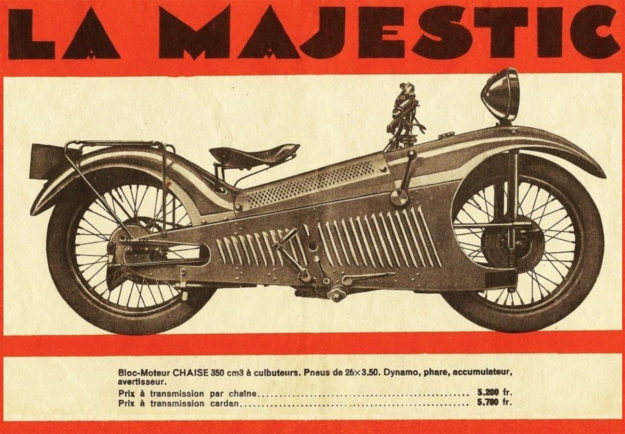
With the Majestic as inspiration, Revival’s focus immediately turned to its atypical hub-steered design, and then its flowing bodywork. But before they could get started, they needed a suitable motor.
Right off the bat the guys knew they wanted a relatively modern engine—and something that wasn’t widely used in custom bikes. They quickly settled on the colossal 1,000 cc, six-cylinder mill from a 1980 Honda CBX.
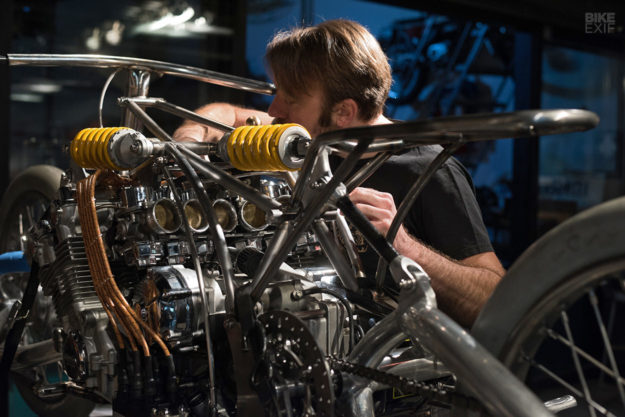
“The CBX six is a truly impressive feat of mechanical engineering,” says Alan. “It’s wide, powerful and stunningly well engineered; it was a perfect starting platform.”
With consensus on the basic concept, Team Revival spent the drive home from Dallas pondering the details, and how they’d go about building such a unique machine. “The main goal of all Revival builds,” explains Alan, “is that they have to function even better than they look.”
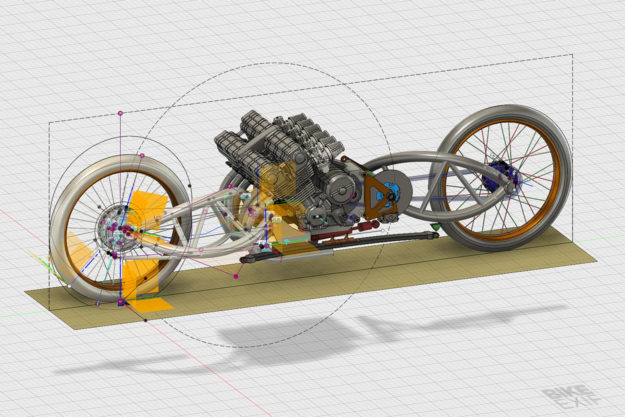
“Hub-center steering motorcycles are nothing new, and custom builders as well as manufacturers are still building them. But, to us, none of the hub-center design bikes are elegant in their aesthetic design. They all seem too complex visually, and end up looking more robotic and mechanical than beautiful.”
“Our main goal was to break that norm, and build something complex functionally, but simple appearing. This was not an easy thing to pull off.”
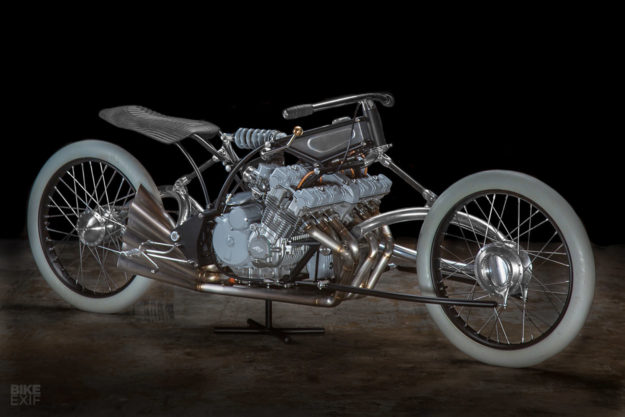
Revival’s first solid design anchor was the idea of using large diameter wheels, to match the proportions of the monstrous motor and the overall visual language. They found a 28” Firestone clincher replica tire, made by Coker, which fit the bill. With wheels and tires in hand, Alan and head engineer Stefan Hertel began sketching out the chassis.
Using a CAD drawing of the Honda CBX engine, Stefan created a twin swing arm design that was functional, beautiful and adjustable. The control arms not only steer the front hub, but also control the suspension angle.
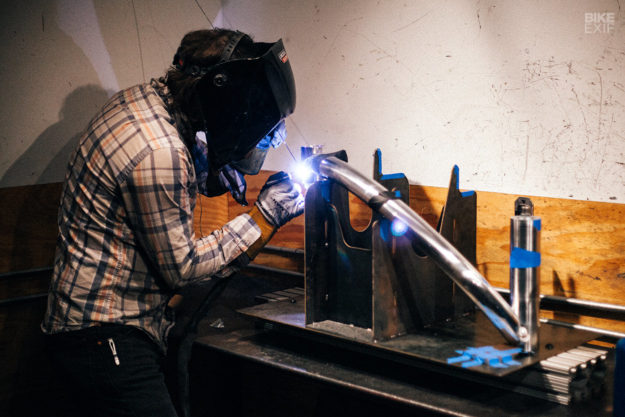
That means that the arms have complete control over the steering angle and trail measurements, no matter where the front wheel is in its travel. Matched to opposing steel cables and a pair of linkage-actuated Öhlins shocks, it makes for a very stable setup that handles sharper than you’d think.
Everything’s been built in-house—from the beautiful one-off front hub, to the single-side aluminum swing arms. The frame’s a mix of stainless and mild steel tubes and plates, powder coated in a finely textured black. Revival built the rear hub too, and a small aluminum fuel tank.
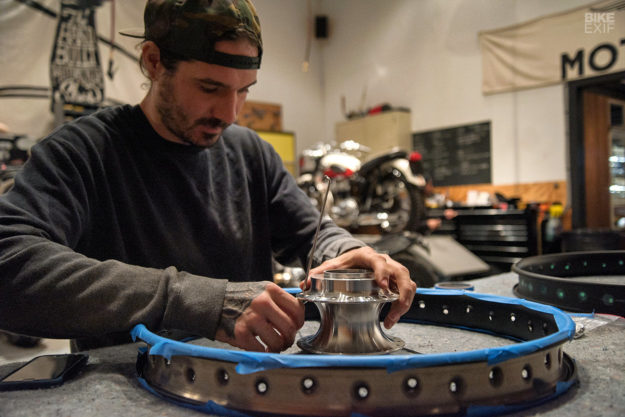
There’s so much great engineering to geek out on. Just look at the rear brake; there’s a jackshaft design on the drive sprocket, and an inboard brake. It uses a Brembo master cylinder and caliper, a CNC-machined rotor carrier and a custom built Sniper II brake line.
The controls are equally impressive, with stainless steel handlebars fitted with an internal throttle and clutch. Gears are changed via a custom-made hand shifter mechanism to the right of the tank. The leather grips, and that stunning saddle, were both upholstered in-house.
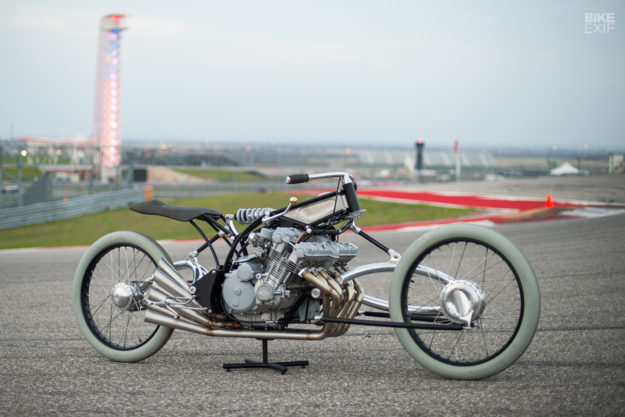
On the mechanical side, Revival have treated the motor to a howling six-into-six exhaust system. The engine cases have been powder-coated gray, and are further protected by a custom-made alloy plate.
There’s also a C5 ignition system, with cloth-covered spark plug leads. An Antigravity 8-cell battery, a regulator/rectifier from Rick’s Motorsport Electrics, and billet aluminum push button switches complete the wiring package.
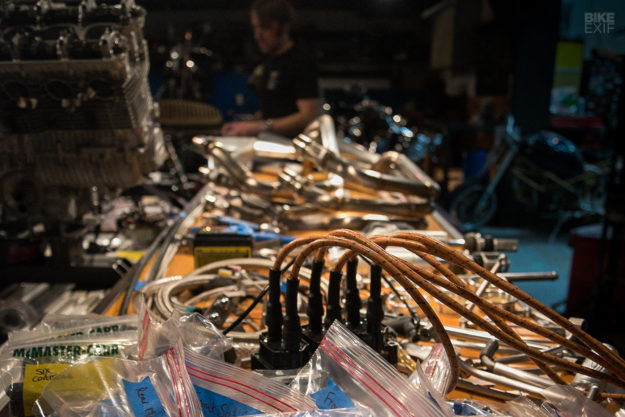
By now, you’re probably wondering why The Revival Six doesn’t resemble a Majestic. That’s because it’s devoid of any bodywork. “The original Majestic had this beautiful flowing bodywork,” explains Alan, “with a mouth shape at its opening.”
“When Georges Roy built the Majestic he was proving that pressed steel frames could be used on motorcycles, as they were in cars—so the cost of fabrication would be cheaper as well. Covering up the unsightly pressed steel frame just made sense.”
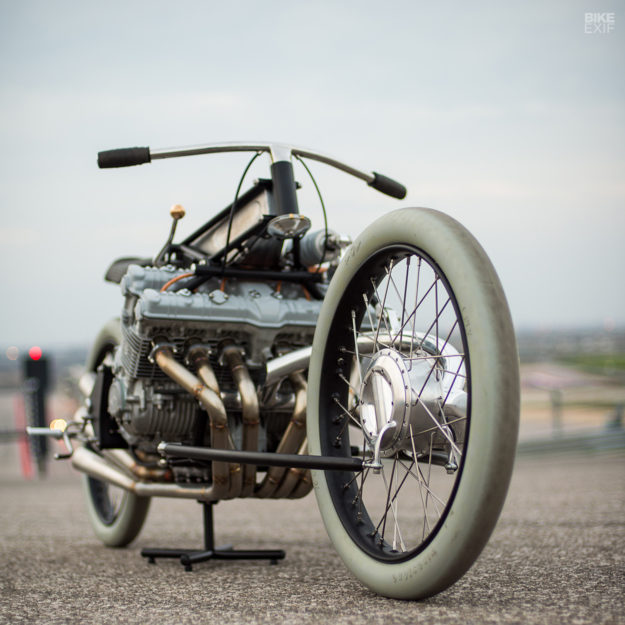
“We set the bar design-wise at ‘elegant,’ so what we ended up building did not need to be covered up by bodywork and flowing lines,” says Alan.
“Once we got the bike running as a rolling chassis, and all the mechanical bits were finished, our plan and preference suddenly changed. We stared at the bike on the bench, rode it around the parking lot and just couldn’t get over how much we liked all the pieces we were about to hide under a carbon fiber shell.”
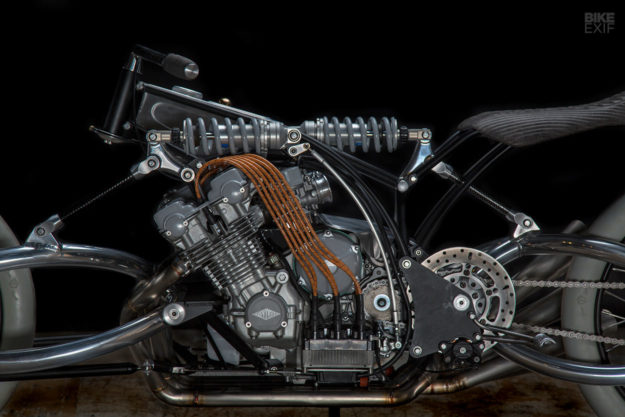
The team had even started designing various shapes in CAD, and built wire mockups and wooden bucks. Even when they scaled back the idea to just encasing part of the swing arm, it still felt heavy-handed and unnecessary.
“It seemed to be covering up the best thing Revival had ever built,” shrugs Alan. “Ultimately we spoke with our client, and explained that we would really like to simply finish it as a naked bike, so that the engineering and design of all that it took to build underneath would remain on full display. He agreed.”
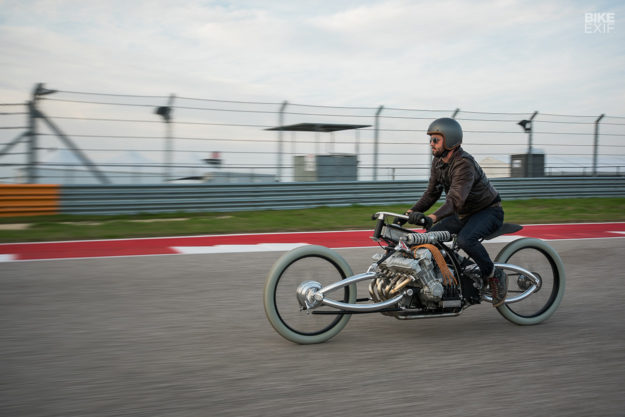
Revival were chuffed with how it turned out—but there was one more box to tick. The day before delivering the bike to the Haas Moto Museum, they took ‘The Six’ to the world-class Circuit Of The Americas down the road, for a shakedown.
Alan was understandably nervous; this was extreme engineering, even by Revival’s standards. “The question is always running through your head when you first throw your leg over something this alien,” says Alan. “’Will it hold together or will it throw me off like a rag doll?’”
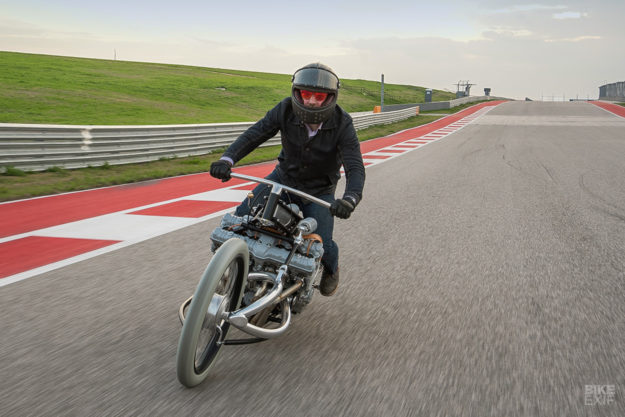
“The math was there, the planning was there, the testing was there, but still…will theory translate into function as it was intended? I cannot say if it was luck or good planning and execution, or a combination of all three, but riding The Six for the first time was amazing.”
With 105 horsepower on tap and a 9,500 rpm redline, and weighing 75 pounds less than a stock CBX, Alan and Stefan took turns building up their confidence on track. “It felt light and agile and truly capable of being ridden for many comfortable and fun miles.”
“This is no museum queen!”
Revival Cycles | Facebook | Instagram
The Six can exclusively be seen at the Haas Moto Museum in Dallas, Texas between now and April 2019, when the intention is to show it off just once at the Handbuilt Motorcycle Show in Austin, Texas, over MotoGP weekend.
